Introduction to the Digital Age and the Necessity of Online Presence
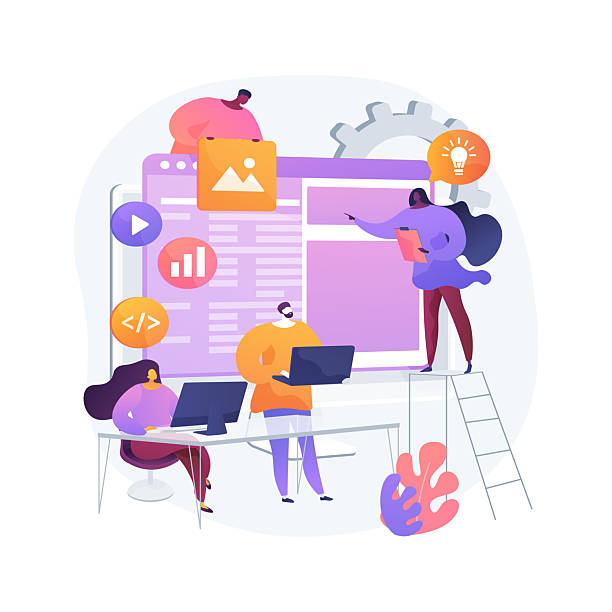
In today’s world, a strong online presence is more vital than ever for businesses.
Transitioning businesses to the digital space is an inevitable trend, and those who ignore this change will gradually lose their market share.
The internet is no longer just a communication tool; it’s a vast and dynamic market that offers countless opportunities for sales and growth.
There’s no longer a need to be limited to local customers; with an e-commerce website design, you can offer your products or services to customers from across the country and even globally.
Recent transformations in people’s lifestyles and shopping habits have increasingly highlighted the necessity of this change.
Many consumers prefer to make their purchases online, at any hour of the day or night.
This not only brings greater convenience to customers but also allows businesses to increase their sales without physical limitations.
Investing in building an online store means entering an boundless market; a market where competition is intense, but opportunities for growth and innovation are also countless.
Understanding this paradigm shift and taking timely action to adapt to it can guarantee the future of your business.
This is a fundamental step to enter the digital economy and leverage its endless potential.
The answer to this growing market need lies in launching an efficient and attractive e-commerce website.
Such a website is not only a showcase for your products but also a powerful tool for marketing, customer service, and analyzing buyer behavior.
In this article, we will discuss in detail various aspects of e-commerce website design, from basic principles to advanced tips, and provide the necessary guidance for launching a successful online business.
From the importance of user experience to SEO strategies for online stores, we will cover all aspects.
Did you know that 94% of a first impression of a company is related to its website design?
RasaWeb helps you create the best first impression by offering professional corporate website design services.
✅ Creating a professional and trustworthy image for your brand
✅ Easier attraction of potential customers and improvement of online presence
⚡ Get free corporate website design consultation
Features of a Successful and Attractive Online Store
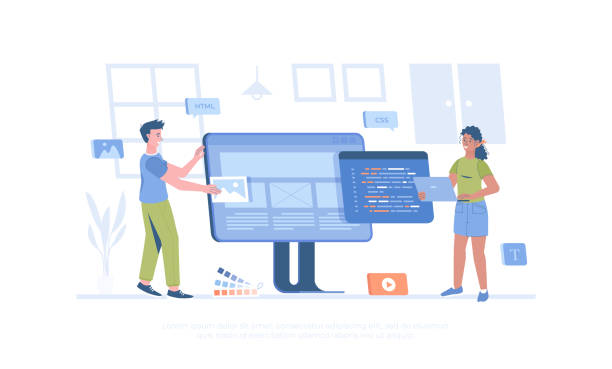
For an e-commerce website to succeed and attract customers, it must have key and important features.
High loading speed, Responsive Design for correct display on all devices, user data security, and payment gateways are among the most important of these features.
The website should be designed in such a way that users can easily find their desired products, add them to the cart, and complete the payment process with minimal hassle.
This requires careful attention to User Interface (UI) and User Experience (UX).
The product catalog must be comprehensive and accurate.
Each product should have high-quality images from various angles, complete descriptions, and technical specifications.
The ability to compare products, a user review section, and product ratings also significantly help in increasing customer trust and facilitating the purchasing process.
The presence of a powerful search engine within the site is also highly important, as it helps users quickly find what they are looking for.
These points must be carefully considered and implemented in the e-commerce website design process.
Furthermore, a successful online store must have powerful management capabilities.
Inventory management, order tracking, Customer Relationship Management (CRM) system, and analytical and reporting tools are all essential for the proper administration of an online business.
The ability to offer discounts and promotional campaigns, a customer loyalty points system, and integration with social networks can also help strengthen marketing strategies.
Finally, strong and fast customer support, via online chat, phone, or email, plays a vital role in maintaining and increasing customer satisfaction.
These aspects are less related to the physical website design but play a key role in its sustainability and success.
E-commerce website design is just the beginning; continuous maintenance and improvement are also of great importance.
Step-by-Step Stages of E-commerce Website Design and Development

The process of e-commerce website design is a multi-stage project that requires precise planning and systematic execution.
The first step is needs analysis and goal setting.
You need to know exactly what products you sell, who your target audience is, and what goals you are pursuing by launching your online store.
This stage also includes market research and competitor analysis.
Table 1: Main Stages of E-commerce Website Design
| Stage | Description |
|---|---|
| Analysis and Planning | Defining objectives, audiences, and main features |
| UI/UX Design | Creating wireframes, mockups, and prototypes |
| Development and Coding | Implementing front-end and back-end of the website |
| Content Production | Adding product descriptions, images, and articles |
| Testing and Launching | Checking performance, security, and readiness for publication |
| Support and Optimization | Maintenance, updates, and data analysis |
After the planning stage, it’s time for graphic and user experience (UI/UX) design.
In this stage, the look and feel of the site take shape.
Wireframes and mockups are designed to define the structure and layout of the pages.
Then, it’s time for the development and coding stage.
In this section, graphic designs are converted into executable code, and the database, Content Management System (CMS), and other technical components of the website are implemented.
In this step, choosing a suitable platform for building an online store is very important.
Website content, including product descriptions, high-quality images, and relevant articles, must be uploaded at this stage.
After development is complete, the website enters the comprehensive testing and review phase to ensure the correct functioning of all sections.
These tests include checking speed, security, compatibility with various browsers and mobile devices, and payment gateway functionality.
Finally, after ensuring proper functionality, the site is launched.
However, the work doesn’t end here; ongoing support, updates, and optimization are essential for the long-term success of an e-commerce website design.
This process is dynamic and continuous.
Choosing the Right Platform for Your Online Store
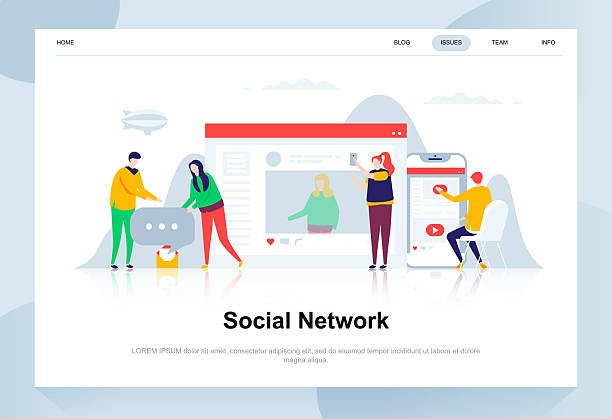
One of the key decisions in the e-commerce website design process is choosing the right platform for it.
This choice will significantly impact the site’s capabilities, costs, and ease of management.
Various platforms exist for launching an online store, each with its own advantages and disadvantages.
Open-source platforms like WooCommerce, an extension for WordPress, and Magento, offer high flexibility and give you full control over the site’s code and functionality.
These platforms are suitable for businesses with specific needs and high scalability.
In contrast, SaaS (Software as a Service) platforms like Shopify and BigCommerce, offer ready-to-use and hosted solutions.
These platforms are suitable for those looking for a quick and easy store setup and require less technical knowledge.
However, they may have limitations in terms of customization and full control over the source code. Platform selection should be based on factors such as budget, product volume, business needs complexity, future scalability, and your team’s technical knowledge.
Each platform has its own advantages and disadvantages, and no single solution is suitable for everyone.
For a small or medium-sized business looking for a quick and low-cost setup, WooCommerce or Shopify are excellent options.
However, for larger companies with high transaction volumes and complex needs, platforms like Magento or custom development might be more suitable.
The important point is that your chosen platform should be able to integrate with other tools such as CRM systems, email marketing tools, and payment gateways.
Sufficient research and consultation with experts in e-commerce website design can help you make the best decision.
The right platform will be the backbone of your online store’s success.
Is your e-commerce site ready to maximize customer attraction and sales? RasaWeb transforms your online business with modern and efficient e-commerce website designs.
✅ Increased speed and SEO improvement
✅ Excellent user experience on mobile and desktop⚡ Get free e-commerce website design consultation from RasaWeb!
The Importance of User Experience (UX) and User Interface (UI) in Online Stores

User Experience (UX) and User Interface (UI) are two vital concepts in e-commerce website design that play a direct role in the success or failure of an online store.
UI refers to the visual design and elements of the site that users interact with, while UX refers to the overall feeling of the user when using the site and how easy and enjoyable the process is.
An attractive UI can draw users in, but a poor UX will quickly drive them away.
To create an excellent user experience, factors such as site loading speed, easy and intuitive navigation, a simple and transparent payment process, and compatibility with various devices (mobile, tablet, desktop) must be considered.
Users should be able to easily find products, get the necessary information, and finalize their purchases without any confusion or obstacles.
Responsive Design is no longer an option but a necessity; a significant portion of website traffic comes from mobile devices.
Any shortcomings in this area can lead to a high bounce rate and reduced sales.
Therefore, in the e-commerce website design process, paying attention to the details of these two sections is essential.
The user interface should be visually appealing, consistent, and aligned with your brand. Using appropriate colors, fonts, images, and icons can significantly impact the site’s attractiveness and professionalism.
But beyond aesthetics, the UI must be functional and practical.
Buttons must be clearly identifiable, forms must be simple and completable, and every interactive element should provide appropriate feedback to the user.
User Testing and gathering feedback from real users are valuable tools for identifying weaknesses and continuously improving UX and UI.
Investing in this area means investing in customer satisfaction and, consequently, increasing sales and customer loyalty.
These aspects should be prioritized in e-commerce website design.
Search Engine Optimization (SEO) for Online Stores
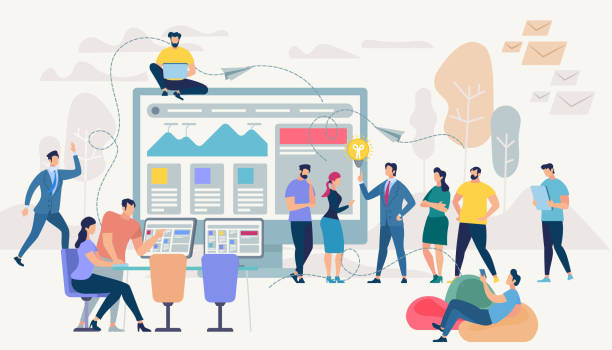
Without targeted traffic, even the best e-commerce website design cannot succeed.
Search Engine Optimization (SEO) is the process of improving your site’s ranking in organic search results on Google and other search engines.
A strong SEO strategy is especially important for online stores, as it helps users find your products when they are looking for them.
This includes optimizing keywords, site structure, loading speed, and creating high-quality content.
One of the important aspects of SEO for online stores is precise keyword research.
You need to identify the words and phrases that your potential customers use to find similar products.
These keywords should then be used naturally and strategically in product titles, descriptions, URL addresses, meta descriptions, and image alt tags.
The site structure must be logical and crawlable for search engine bots, so that each product page is easily accessible and categories are clearly defined.
Proper internal linking also helps distribute page authority and improve rankings.
Producing high-quality and relevant content, beyond product descriptions, also plays a key role in SEO. Creating a blog section in your online store and publishing educational articles, guides, and industry-related news can increase your site’s authority and target more keywords.
Site loading speed and mobile compatibility, which are also part of the user experience, are considered ranking factors by search engines.
Technical SEO, including optimizing robots.txt, XML sitemap, and canonical tags, is also of high importance.
By correctly implementing these strategies, your organic traffic and consequently your sales through your online store will significantly increase.
This is one of the most important aspects of e-commerce website design.
Secure Payment Gateways and the Importance of Security in an Online Store
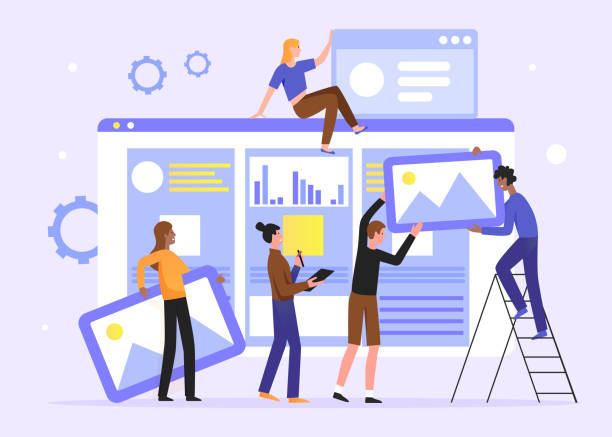
Information security and transactions are among the most important aspects of any e-commerce website design.
Users must be confident that their personal and financial information is protected when shopping online.
Implementing SSL (Secure Sockets Layer) certificates to encrypt communication between the user’s browser and the website server is an absolute necessity, not only increasing security but also being effective in SEO ranking.
Customer data security must be the top priority for any online store.
Table 2: Common Payment Gateway Types
| Payment Gateway Type | Description | Advantages | Disadvantages |
|---|---|---|---|
| Direct (Bank) | Direct connection to the bank, requires license acquisition | Lower fees, higher trust | More complex process, requires license |
| Indirect (Intermediary Companies) | Using PSP companies (e.g., ZarinPal, IDPay) | Faster setup, support services | Higher fees, reliance on intermediary |
| Digital Wallets | Such as PayPal, cryptocurrencies | Speed and ease, high security | Acceptance limitations, currency fluctuations (for cryptocurrencies) |
| Cash on Delivery (COD) | Customer pays upon receipt of goods | Increased trust, suitable for specific areas | Higher risk for seller, logistical complexity |
Choosing and implementing secure and reliable payment gateways is also of high importance.
In Iran, direct bank payment gateways or intermediary gateways like ZarinPal or IDPay are commonly used.
Each of these methods has its own specific features and requirements.
Ensuring the compatibility of the payment gateway with your chosen platform and its ease of use for customers are key points. The payment process should be smooth, fast, and unambiguous to prevent cart abandonment.
Furthermore, privacy policies and terms of service must be clearly stated on the site.
This is not only essential for building customer trust but also fulfills legal requirements.
Regular software updates, using strong firewalls, regular data backups, and conducting periodic security audits are all part of a comprehensive strategy to maintain the security of your e-commerce website.
Ignoring security can have irreparable consequences for your business and customer trust.
In any professional e-commerce website design, security is an inseparable principle.
Marketing and Advertising Strategies to Boost Sales
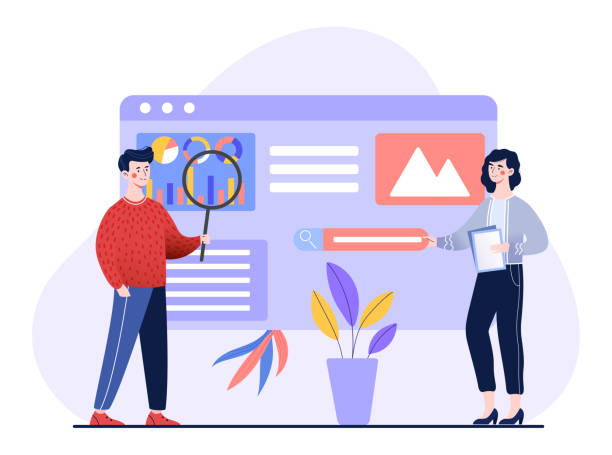
After e-commerce website design and its launch, the next step is customer acquisition and sales growth.
Marketing and advertising play a vital role in this stage.
Using a combination of digital marketing methods, including social media marketing, content marketing, email marketing, and paid advertising, can help you achieve your goals.
Each marketing channel has its own specific potentials that should be utilized according to your target audience and product type.
One of the most effective strategies is content marketing.
By creating valuable and relevant content related to your products, you can attract your target audience and convert them into customers.
This content can include blog articles, videos, infographics, and buying guides.
Email marketing is also a powerful tool for maintaining communication with existing customers and attracting new ones.
Sending newsletters, special offers, and abandoned cart reminders can help increase conversion rates.
Using marketing automation tools significantly enhances the efficiency of this process.
Paid advertising such as Google Ads and social media advertising (like Instagram and Telegram) can drive targeted and fast traffic to your site.
These advertisements allow you to precisely target your audience and measure your return on investment.
Collaborating with influencers, holding contests, and creative advertising campaigns can also help increase brand awareness and attract new customers.
The most important point in marketing is data analysis and continuous optimization of campaigns based on results. Marketing for an online store is an iterative process that requires continuous monitoring and adjustments for maximum effectiveness.
Are you dissatisfied with the low conversion rate of visitors to customers on your e-commerce site?
Solve this problem forever with professional e-commerce website design by RasaWeb!
✅ Increase in visitor-to-customer conversion rate
✅ Creating an excellent user experience and gaining customer trust⚡ Get free consultation
Maintenance, Support, and Continuous Updates of an E-commerce Website
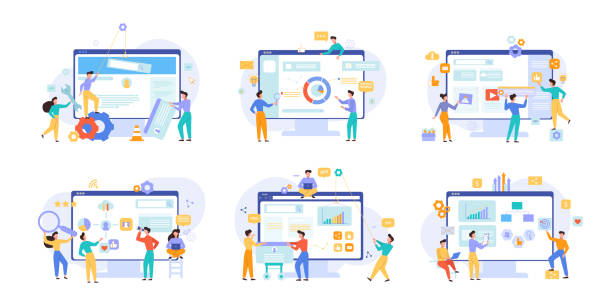
E-commerce website design is just the beginning; continuous maintenance, technical support, and regular updates are absolutely essential for its long-term success.
Websites, like any other software system, require care and attention to ensure their efficiency and security.
Ignoring these aspects can lead to security issues, performance degradation, and even loss of customers.
Software updates, including the Content Management System (CMS), plugins, and themes, should be performed regularly.
These updates not only include security enhancements but also bring new features and bug fixes.
Regular backups of all site data, including the database and files, are a crucial preventive measure.
In case of any serious issues, you can use these backups to quickly restore your site.
Technical support services should be responsive quickly in case of any errors or need for assistance.
Monitoring site performance, including loading speed and server response time, is also an important part of maintenance. Tools like Google Analytics and Google Search Console can provide valuable insights into site traffic, user behavior, and potential errors.
Analyzing this data helps you identify weaknesses and make data-driven decisions for site improvement.
In addition to technical maintenance, content updates are also important.
Adding new products, updating old product descriptions, publishing new blog articles, and updating contact information and site policies all help maintain the freshness and dynamism of your store.
Ultimately, a successful e-commerce website design requires a continuous commitment to improvement.
User Behavior Analysis and Conversion Rate Optimization (CRO)
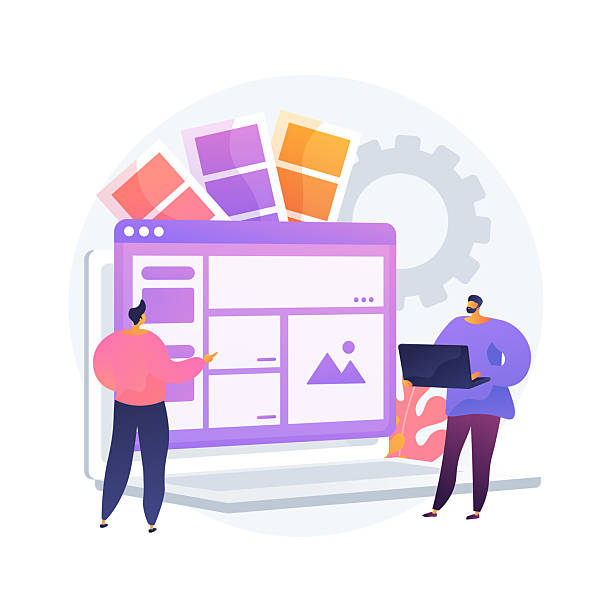
One of the advantages of e-commerce website design compared to physical stores is the high capability of tracking and analyzing user behavior.
Understanding the audience and how they interact with your website is a key step for Conversion Rate Optimization (CRO).
CRO is the process of improving a website to increase the percentage of visitors who perform a desired action, such as purchasing a product or subscribing to a newsletter.
In-depth data analysis helps you identify and address weaknesses in the purchasing process.
Tools like Google Analytics, Hotjar, and Crazy Egg allow you to see how users interact with your pages, which paths they enter from, how much time they spend on each page, and where they leave the site.
Heatmaps, Scrollmaps, and Session Recordings can provide valuable visual insights into user behavior.
By analyzing this data, you can identify pages with high bounce rates or complex purchasing processes.
A/B Testing is a powerful optimization method. In this method, two different versions of a page or an element (such as a call-to-action button, headline, or image) are shown to different groups of users to determine which version performs better.
This data-driven approach allows you to implement small changes that have a significant impact on conversion rates.
Conversion rate optimization not only helps increase sales but also leads to reduced marketing costs, as your existing traffic is utilized to its best.
This is a vital aspect of the continuous maintenance and growth of any successful e-commerce website.
Ultimately, the more you know about your customers’ behavior, the better decisions you will make to improve your e-commerce website.
Frequently Asked Questions
| Question | Answer |
|---|---|
| What is e-commerce website design? | It is the process of creating an online platform for selling products or services, which includes user interface (UI) design, user experience (UX), and the necessary functionalities for online purchasing. |
| What are the key features of a good e-commerce website? | Easy navigation, high loading speed, powerful search capability, efficient shopping cart, secure payment gateway, clear product display with quality images, user review display capability, and responsiveness (mobile compatibility). |
| What platforms are common for e-commerce website design? | Popular platforms include WooCommerce (on WordPress), Shopify, Magento, PrestaShop, as well as custom content management systems. |
| What is the importance of an e-commerce website being responsive? | Given the increasing use of mobile for online shopping, website responsiveness (correct display on different screen sizes) is crucial for providing a good user experience and increasing conversion rates. |
| How long does the design process for an e-commerce website usually take? | The duration depends on the project’s complexity, the number of products, required special features, and implementation method, and can vary from a few weeks to several months. |
And other services of RasaWeb Advertising Agency in the field of advertising
Smart Digital Advertising: A new service for increasing customer acquisition through the use of real data.
Smart Advertising Campaign: Professional optimization for customer acquisition using SEO-driven content strategy.
Smart Digital Advertising: An effective tool for attracting customers with the help of attractive user interface design.
Smart Advertising Campaign: Revolutionize SEO ranking improvement with user experience customization.
Smart Content Strategy: A dedicated service for growth in customer acquisition based on key page optimization.
And over a hundred other services in the field of internet advertising, advertising consultation, and organizational solutions
Internet Advertising | Advertising Strategy | Advertorial
Sources
Comprehensive Guide to E-commerce Website Design
Why Do You Need a Professional E-commerce Website?
10 Important Features in Successful E-commerce Website Design
Search Engine Optimization for E-commerce Websites
? RasaWeb Digital Marketing Agency is your partner and guide on the challenging path of the digital world. By providing services such as website design with a modern user interface, professional SEO, and specialized content production, we elevate your business and ensure a powerful online presence for you.
📍 Tehran, Mirdamad Street, next to Bank Markazi, Kazerun Jonubi Alley, Ramin Alley, No. 6

